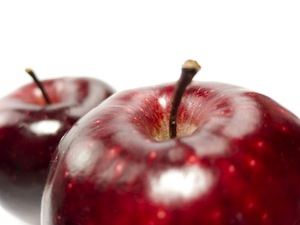We all know that fiber is good for us, but often times, it can be difficult to meet the daily recommended amount of fiber. Eating high fiber foods is a great way to regulate your digestive tract, as well as reduce your chances of developing heart disease and diabetes.

Below is a list of high fiber foods, all of which will instantly improve your diet, as well as help cleanse your colon naturally.
1. Beans
Beans are one of the best high fiber foods you can add to your diet, as they are very high in insoluble fiber, which can help to lower cholesterol. One cup of black beans will provide you with approximately 60% of your daily recommended amount.
2. Broccoli
Broccoli is another great addition to your diet. It’s naturally high in antioxidants, available year-round and is not only a great high fiber food, but also a good source of vitamin A, vitamin C and vitamin K. One cup of broccoli will provide you with approximately 20% your daily reccommended amount.
3. High-fiber cereal

Modern technology has created high fiber cereals that actually taste good! Eat a bowl of high fiber cereal with skim milk for a nutritious and filling snack. Throw in strawberries and bananas for extra nutritional benefits.
4. Apples
While apples have only moderate fiber, they contain excellent phytonutrients that interact with the fiber to create the same beneficial effects as a high-fiber food, like lowering your blood fat levels. It’s recommended that you buy organic apples when possible.
5. Pistachios
Raw nuts, especially pistachios, make a great snack. Just one ounce of pistachios contains three grams of fiber! And they’re great for fatty oils, also.
6. Artichokes
Artichokes are extremely versatile, and just one large artichoke contains approximately 6-7 grams of fiber. They’re also a good source of potassium, vitamin C and folate.

Raspberries
7. Raspberries
Not only are they tasty, but just one cup of raspberries contains six grams of fiber. They also contain 54% of your daily value of vitamin C. Berries are another food that is recommended you buy organic.
8. Whole-grain flour
Unlike its white counterpart, whole-grain flour has not been stripped of its fiber and other nutrients. In a 120-gram serving of whole grain flour, there are fifteen grams of fiber.
9. Bananas
One large banana will provide you with approximately12-20% of your daily recommended amount of fiber, not to mention vitamin C and vitamin A. If you’re feeling constipated, eating a banana may give you quick relief! And the great part? Bananas are the perfect snack for when you’re on the go!

10. Split peas
In just one cup of cooked split peas, there is a whopping 16 grams of fiber. Want to up your fiber intake? Invest in split peas immediately, as one cup will provide you approximetely 65% of your daily recommended amount!
11. Avocados
In just one medium-sized avocado, there are approximately 10-12 grams of fiber, not to mention a wide variety of other beneficial nutrients. The plus? Avocados are extremely versatile. Add a slice to a sandwich or whip up some guacamole! Read more




